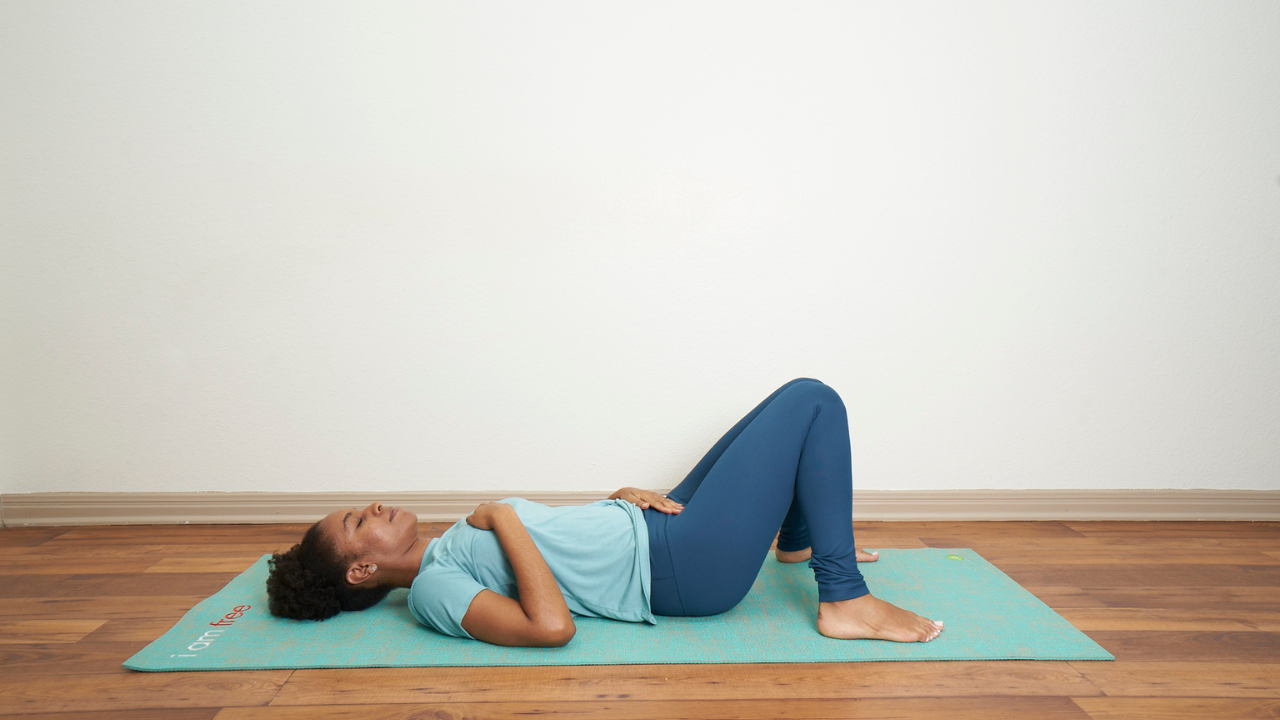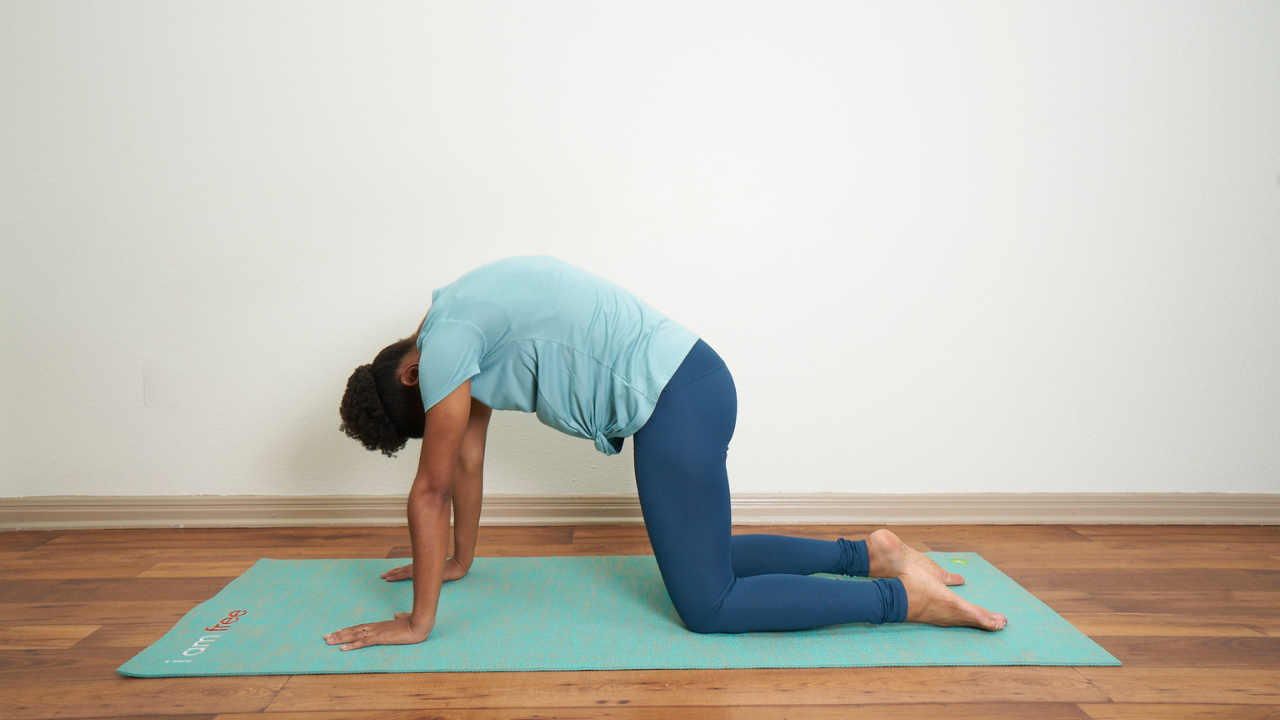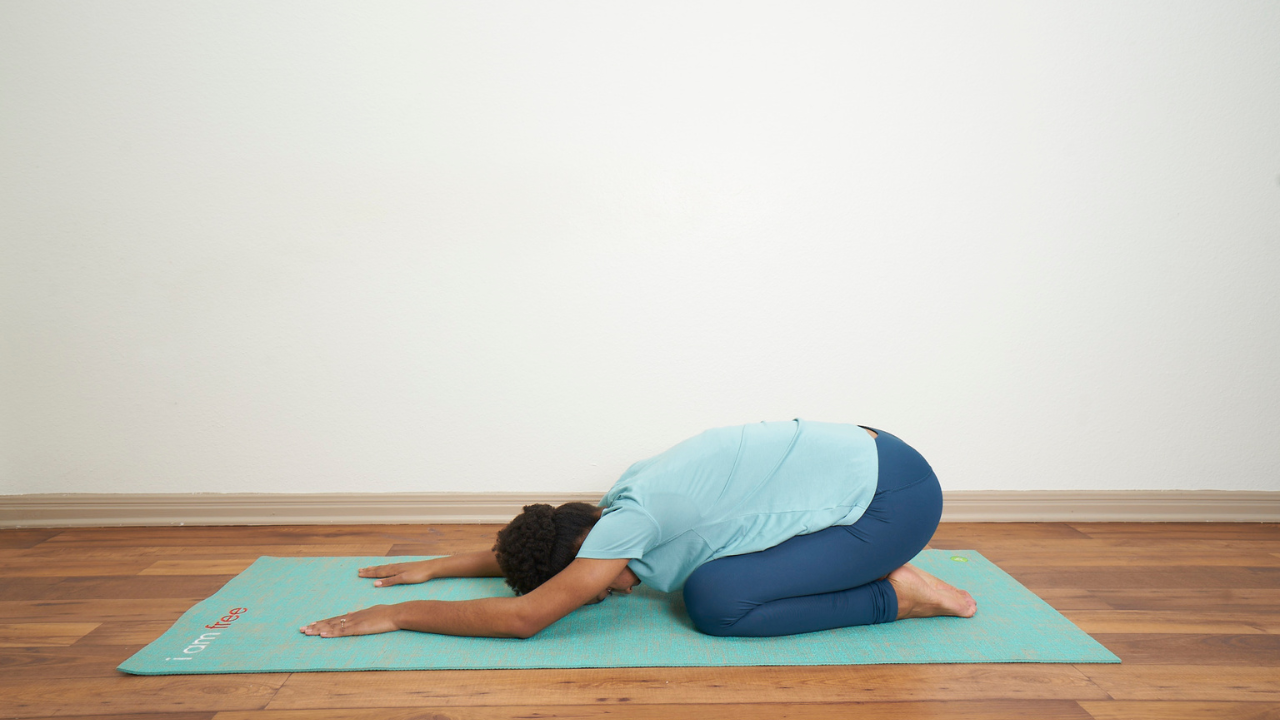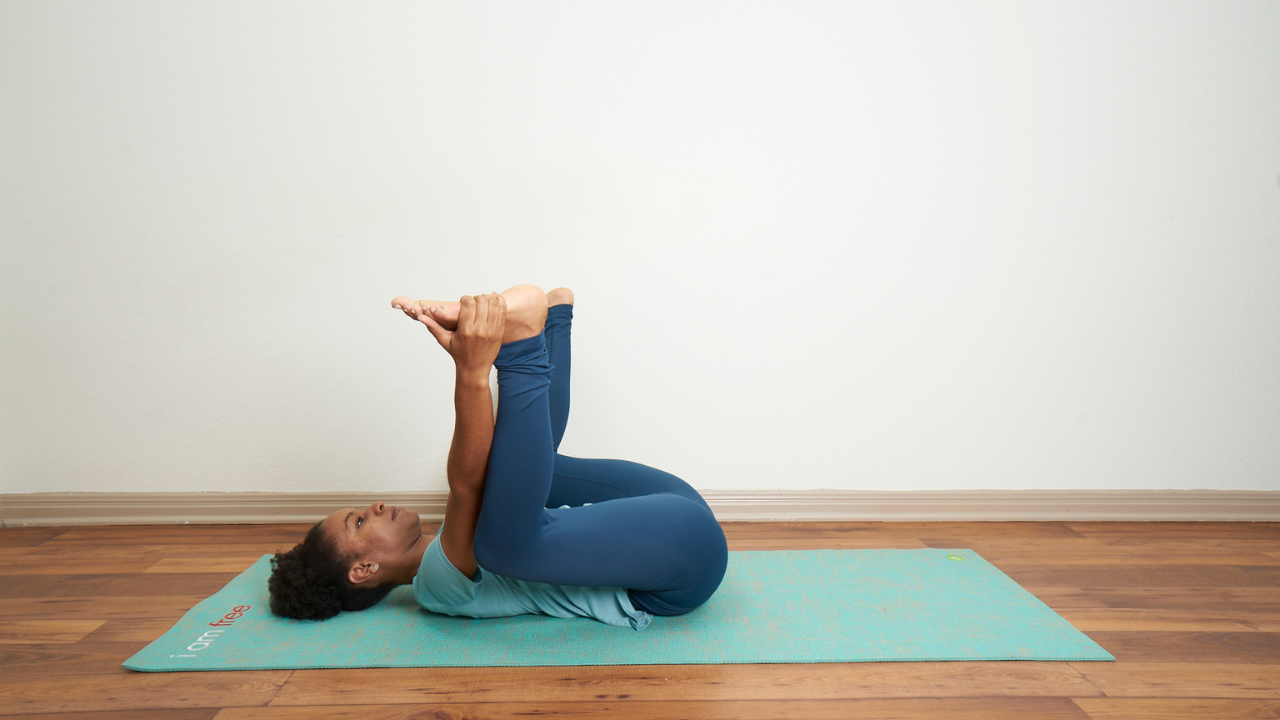An Intro to Yoga for Fertility
With rounded shoulders and downcast eyes, she sighed out the same words I had heard countless other women confess, “I feel like my body has betrayed me.”
I offered a knowing nod. With a heart full of empathy, I said, “You’re not alone. A lot of women struggling to conceive feel the same way.”
While listening to someone’s story and normalizing their experience is incredibly powerful, I wanted to offer more.
I wanted to offer something to help her and other women reconnect with and befriend their bodies. Something to help them remember their innate wholeness. Something to help them access a sense that their bodies were still their most trusted ally even when it didn’t feel like it or look like it.
It didn’t take long before it was clear to me: I needed to share yoga with this community.
So that’s what I did. And I’m so happy I did.
Receiving news of positive pregnancy tests from one-on-one clients and viewers of my YouTube videos makes my day. And receiving comments and DMs like these, “Yesss! I was taking your fertility classes earlier this year and now I’m in my second trimester! Thanks for these classes, I truly think they’re the key to my success.” or “I became much more confident in my body and more gracious to my body… and now I'm excited to say that we're six weeks pregnant,” have bolstered that original knowing I had all those years ago: yoga can be a powerful tool to support people who are planning to become parents.
Since I started sharing fertility and women’s health-focused yoga practices over five years ago, I’ve seen more fertility yoga classes pop up in local communities and online. Maybe you have too. But maybe you’re not quite sure what makes fertility yoga, well, fertility yoga (as opposed to “regular yoga”). Or perhaps you’re wondering if there’s any modern Western science to back up the use of yoga to enhance reproductive health. Or maybe you’re simply looking for a yoga sequence to try as a part of your preconception preparation plan or as a way to show yourself some kindness as you continue down the sometimes bumpy path to parenthood.
Whatever the reason you’ve landed on this article, I hope that by the end of it, you are more informed about the potential benefits of yoga for fertility and are inspired to try it (or learn how to teach it.)
In this article, I’ll share my definition of fertility yoga, the possible therapeutic benefits of yoga for reproductive health, and a gentle grounding fertility practice.
First, what is fertility yoga?
Fertility Yoga Defined
There isn’t an official definition of "fertility yoga" in the dictionary or any yogic texts I can quote here, so I offer you my working definition of "fertility yoga."
I define fertility yoga as the intentional therapeutic use of the tools and techniques of yoga for the express purpose of supporting optimal reproductive function while preparing the body, mind, and spirit for parenthood.
Essentially, what makes fertility yoga, fertility yoga, is:
intentionality
a therapeutic lens, and
purpose
Intentionality
In this case, I use intentionality to point to the goals and desires the student brings to their practice, in addition to the underlying emotional, mental, and energetic states I hope to help students cultivate and experience.
For some students, their aim might be to increase their chances of getting pregnant. For others, it might be to relieve pelvic floor discomfort, allowing for penis-in-vagina sex. While for others, it might be to manage the stress of life and fertility challenges.
My underlying goal might be to create a sense of receptivity, ease, sensuality, vitality, or hope. Or it might be to set the stage for someone to have a positive and enjoyable experience in their body. Other times, my goal might be to provide an opportunity to practice patience and get comfortable with not always knowing what’s next.
A Therapeutic Lens
Therapeutically, I look at fertility yoga through two lenses: a traditional medicine lens and a modern Western science lens.
Traditional Medicine
Traditional medicine systems from around the world are incredibly diverse and varied, but they often share some common elements, including the beliefs that:
nature is to be revered, learned from, and emulated.
the development of disease is multifactorial. The causes of illness or imbalance may include the environment, adverse weather conditions, genetics, heredity, lifestyle behaviors, spirituality, beliefs, emotions, thoughts, etc.
the mind, body, and spirit are inseparable. Each influences the other and each contributes to the health of the individual.
preconception preparation of the mind, body, and spirit is crucial for both males and females.
In both Traditional Chinese Medicine (TCM) and Ayurveda, protecting and replenishing the reservoirs of energy and vitality (Jing in TCM and Ojas in Ayurveda) is essential when preparing for conception and pregnancy. After all, it is these reservoirs that give rise to our ability to reproduce.
Like begets like, therefore life begets life. So when someone decides they’d like to create and give life to a new being, filling themselves with as much vitality and life force as possible is an incredibly impactful thing to do. Yoga is one practice that can be turned to increase one's vitality.
Additionally, yoga can help someone reflect on and process difficult emotions (infertility is notorious for bringing those up). It can also encourage the unhindered flow of energy through the body, ultimately supporting overall well-being and reproductive health.
As someone deeply influenced by TCM (thanks, Yoga Medicine!), I often refer to meridian theory and five element theory to identify and address potential disharmonies that can impair reproductive function. Let’s say I have an active and ambitious client in her late 30s who reports feeling excessively fearful that she won’t be able to conceive (even though she hasn’t started trying yet), and is also experiencing fatigue, low libido, and low back pain. If I consider her symptoms, emotions, and lifestyle, I might suspect her water element and yin could use some support.
To support both, I would focus on poses along the backside of her body and her inner legs, where the Bladder and Kidney meridians run. I would also choose slow, gentle, repetitive movements followed by yin and restorative poses. Meditation and acupressure at Kidney 1 or Kidney 3 would likely be a big part of her at-home self-care recommendations.
Western Science
I’d be lying if I said there has been plenty of research on yoga and fertility. There hasn’t been, but there has been some. And what we do have suggests yoga can benefit those planning or actively trying to conceive.
The Research of Alice Domar, Ph.D.
One researcher who gets plenty of attention in the fertility yoga space is Alice Domar, Ph.D.
In one of her studies, women 40 years old or younger undergoing IVF were randomly assigned to one of two groups. One group participated in a 10-week mind-body program that included yoga, nutrition education, other mind-body practices to elicit the relaxation response, and cognitive behavioral exercises. The second group was the control group.
At the end of the second cycle of IVF, after most of the participants in the mind-body group had attended more than half of the mind-body sessions, 52% of the mind-body group conceived, while 20% of the control group conceived.
In a different study, women diagnosed with infertility (some of whom were undergoing various forms of medical assistance and others who were not) who had been trying to conceive for one to two years were randomized to one of three groups: a cognitive behavioral group, a support group, and a routine care control group. The cognitive behavioral and support groups met for 2 hours each week for ten weeks.
The cognitive behavioral group received “relaxation training, cognitive restructuring, methods for emotional expression, and nutrition and exercise information as they apply to infertility. The relaxation techniques included meditation, progressive muscle relaxation, imagery, autogenic training, and yoga.”
For the support group, the first hour was dedicated to sharing their experiences with infertility and fertility treatment and how infertility impacted their lives, relationships, and feelings. The remaining hour was “spent on a different topic each week, including the impact of infertility on participants’ self-esteem; their relationship with their partner, family, and friends; spirituality; and job or career.” Study participants were followed for one year.
At the end of the year, 55%, 54%, and 20% of the participants in the cognitive behavioral, support, and control groups had experienced a viable pregnancy, respectively.
Anxiety, Depression, Infertility, and Yoga
Infertility exacts a heavy emotional toll from those experiencing it. So it’s not enough to just try to get someone a positive pregnancy test. We must care for their minds and emotions along the journey. To provide quality care, we must care for the whole person.
Based on the findings of the study below, yoga might be the perfect way to do that.
In a study published in 2015, researchers investigated if yoga could improve the mood and quality of life of those diagnosed with infertility.
Women waiting to begin IVF treatment participated in a six-week yoga class. By the end of the study, statistically significant improvements were found in:
fertility-related quality of life
emotional quality of life
mind-body quality of life
anxiety
depression
PCOS and Yoga
Two common causes of subfertility and infertility are oligoovulation (infrequent ovulation) and anovulation (lack of ovulation). Polycystic Ovary Syndrome (PCOS) is a leading cause of both. That said, contrary to what is often believed about PCOS, it is not an infertility diagnosis.
People with PCOS can and do get pregnant, especially when the underlying causes of ovulatory dysfunction are addressed and corrected. Adopting health-supporting behaviors, including regularly practicing yoga can be an effective way to do that for some people with PCOS.
In a series of articles (here, here, and here), researchers shared their findings from a twelve-week yoga intervention conducted with adolescent girls diagnosed with PCOS.
Study participants were placed into two groups. One received yoga as their intervention, the other conventional exercise. For one hour a day, every day for twelve weeks, study participants in the yoga group practiced yoga (which included asana, pranayama, philosophy, relaxation, lectures, and meditation) The other group practiced conventional exercise.
In a separate study, a different team of researchers studied the effect of yoga on women between the ages of 23 and 42 diagnosed with PCOS. The participants attended a 3-hour mindfulness workshop and practiced one hour of yoga (which included body scans, pranayama, vinyasa and restorative asana, guided visualization, and affirmations) three times a week for twelve weeks.
Across both studies, improvements were found in:
cycle regularity
mood
insulin sensitivity
inflammation
androgen levels
hirsutism
Purpose
By purpose, I’m referring to the specific energetic, physical, or skill I hope to impart with a specific pose or technique.
For example, I might incorporate stomach 36 into a practice for a client whose TCM provider has diagnosed her with Spleen Qi deficiency. Or I might explore broken toe while encouraging deep breathing to practice breathing through discomfort with a client undergoing assisted reproductive technology (this can be an important skill to learn that people can then practice during different assisted reproductive techniques that might be painful, uncomfortable, or anxiety-inducing). Or I might choose cat/ cow circles or pelvic tilts to support the circulation of energy and blood to the reproductive organs.
Special Considerations When Undergoing Ovarian Stimulation
It is wise to avoid twists, inversions (except legs up the wall), abdominal crunches, and sudden jerking movements during ovarian stimulation (sometimes called stimming, stims, the stim phase, or the stimulation phase. This is the phase in fertility treatment when drugs are administered to stimulate the development of multiple follicles in the ovaries) and immediately after egg retrieval if ovarian stimulation was used due to the increased risk of ovarian torsion. Any poses that feel uncomfortable or unsafe to the individual, as well as any poses their provider cautions them to avoid, should also be avoided.
What Fertility Yoga is Not
Fertility yoga is not a particular style or "brand" of yoga. Any style or "brand" of yoga can support fertility. That said, some, myself included, would argue that strenuous, fast-paced, or heated practices are not the best options for *most* people who are trying to conceive. This is especially true for people who are chronically stressed, depleted, experiencing chronic disease, or are already quite active.
“Knowledge without action is like having no knowledge at all.” -Ted Nicholas
I've shared a lot and there's still so much more I could share about yoga for fertility and reproductive health. There's always more to learn but knowing more means nothing if what we know isn't put to use.
Beginner-Friendly Grounding Fertility Yoga Sequence
Below, you’ll find a short fertility-supporting sequence, a chance to put this knowledge to use.
Before you start the practice, take note of your mood and breath. As you practice it, notice any sensations you feel in your body. At the end of the practice, notice any changes in your mood, sensations in your body, and breathing. Feel free to use any prop that helps you customize this practice to your body. If possible, set up next to a wall, bed, chair, or couch.
Constructive Rest
Lie down with your knees bent and the soles of your feet flat on the floor. Allow your knees to fall towards each other and walk your feet out as wide as the mat. If it feels comfortable to do so, rest one hand on your lower abdomen and the other on the center of your chest. Breathe deeply here for 1 minute.
Cat-Cow
Make your way onto your hands and knees, hands under your wrists, hips over your knees, with a long, neutral spine. On your inhale, gently arch your spine. On your exhale, gently round your spine. Repeat 7-10 times. Come back to a neutral spine.
Child’s Pose
Place your big toes together and bring your knees out as wide as your mat. Bring your hips back towards your heels, resting them on your heels if it’s comfortable to do so. Walk your hands forward and rest your forehead on the floor or a prop. Rest here for 1 minute.
Happy Baby
Come back up onto your hands and your knees. Then lie down on your back with your knees bent. Draw your knees toward your armpits. Notice if you are clenching your abdomen or lifting your tailbone off the ground. If you are, explore what it feels like to allow your hips to lower to the ground and your abdomen to relax.
Straighten your legs and flex your ankles just enough to point the soles of your feet toward the ceiling.
Choose where you’d like to place your hands:
the backs of your thighs
around your ankles
the outside or inside edges of your feet
Remain here for 30 seconds to 1 minute.
Legs Up the Wall
Lower your feet back to the ground. Sit sideways next to your wall, bed, chair, or couch. Lean back onto your elbows and swivel so your bottom and the backs of your thighs are facing your wall, bed, chair, or couch.
Lie down on your back and rest your straightened legs on the wall. If using a bed, chair, or couch, bend your legs and allow them to drape over your chosen support. If it feels comfortable to do so, place your hands on your lower abdomen. Breathe here for 1-2 minutes.
Savasana
If you’re at a wall and your knees are straightened, bend your knees and bring the soles of your feet to the wall. Whether you’re at your wall, bed, chair, or couch, roll over onto one side. Then, lie down on your back with straightened legs. Rest your hands next to your body with your palms up.
Rest here for at least one minute, longer if time permits and it feels good to do so.
REFERENCES
Domar AD, Rooney KL, Wiegand B, Orav EJ, Alper MM, Berger BM, Nikolovski J. Impact of a group mind/body intervention on pregnancy rates in IVF patients. Fertil Steril. 2011 Jun;95(7):2269-73. doi: 10.1016/j.fertnstert.2011.03.046. Epub 2011 Apr 15. PMID: 21496800.
Domar, A. D., Clapp, D., Slawsby, E. A., Dusek, J., Kessel, B., & Freizinger, M. (2000). Impact of group psychological interventions on pregnancy rates in infertile women. Fertility and Sterility, 73(4), 805–811. https://doi.org/10.1016/s0015-0282(99)00493-8
Domar, A. D., Seibel, M. M., & Benson, H. (1990). The mind/body program for infertility: A new behavioral treatment approach for women with infertility. Fertility and Sterility, 53(2), 246–249. https://doi.org/10.1016/s0015-0282(16)53275-0
Nidhi R, Padmalatha V, Nagarathna R, Amritanshu R. Effects of a holistic yoga program on endocrine parameters in adolescents with polycystic ovarian syndrome: a randomized controlled trial. J Altern Complement Med. 2013 Feb;19(2):153-60. doi: 10.1089/acm.2011.0868. Epub 2012 Jul 18. PMID: 22808940.
Nidhi R, Padmalatha V, Nagarathna R, Ram A. Effect of a yoga program on glucose metabolism and blood lipid levels in adolescent girls with polycystic ovary syndrome. Int J Gynaecol Obstet. 2012 Jul;118(1):37-41. doi: 10.1016/j.ijgo.2012.01.027. Epub 2012 Apr 14. PMID: 22507264.
Nidhi R, Padmalatha V, Nagarathna R, Amritanshu R. Effect of holistic yoga program on anxiety symptoms in adolescent girls with polycystic ovarian syndrome: A randomized control trial. Int J Yoga. 2012 Jul;5(2):112-7. doi: 10.4103/0973-6131.98223. PMID: 22869994; PMCID: PMC3410189.
Oron G, Allnutt E, Lackman T, Sokal-Arnon T, Holzer H, Takefman J. A prospective study using Hatha Yoga for stress reduction among women waiting for IVF treatment. Reprod Biomed Online. 2015 May;30(5):542-8. doi: 10.1016/j.rbmo.2015.01.011. Epub 2015 Feb 3. PMID: 25779021.
Patel V, Menezes H, Menezes C, Bouwer S, Bostick-Smith CA, Speelman DL. Regular Mindful Yoga Practice as a Method to Improve Androgen Levels in Women With Polycystic Ovary Syndrome: A Randomized, Controlled Trial. J Am Osteopath Assoc. 2020 Apr 14. doi: 10.7556/jaoa.2020.050. Epub ahead of print. PMID: 32285088.





